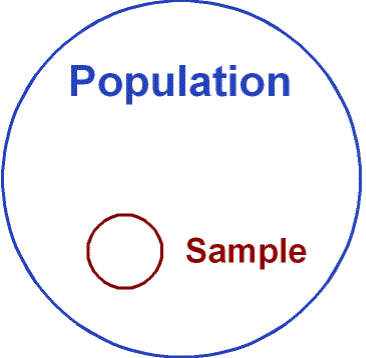
A sample is a "set of elements drawn from and analyzed to estimate the characteristics of a population." (Russ-Eft & Preskill, 2001) Sample populations are used in evaluations when it is not feasible to involve the entire target audience due to: time or cost constraints, limited accessibility of participants, and situations in which validity or accuracy may be compromised by engaging the entire population.
Probability Sampling
- Participants must be randomly selected; each member of population has an equal chance of being selected
- Used when you want to generalize the evaluation's findings
– Ability to determine sample error
Simple Random – Randomly select participants from entire population; however, it sometimes difficult to obtain a complete and accurate list of population
Stratified Random – Divide the entire population into sub-populations called strata, and then using simple random sampling within each strata
Proportional Stratified – Purposive oversampling of some strata and under-sampling of others
Cluster – Sample a larger unit, then sample within the larger unit
Non-Probability Sampling
- Evaluator selects participants
- Potential for bias and threats to validity
– Findings cannot be generalized
Convenience – Select participants that are most accessible, or participants agree on their own accord to participate
Purposive – Select specific individuals to participate because of position, experience, knowledge, or attitudes
Snowball – Contact organizations within industry and ask for referrals; used when you don’t have a list of potential participants
Reference:
Russ-Eft, D., & Preskill, H.(2001). Evaluation In Organizations: A Systematic Approach To Enhancing Learning, Performance, and Change (1st ed.) Perseus Publishing.
Image: http://www.paduiblog.com/tags/war-against-dui/page/2/